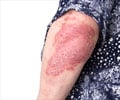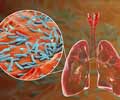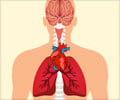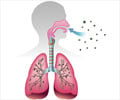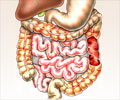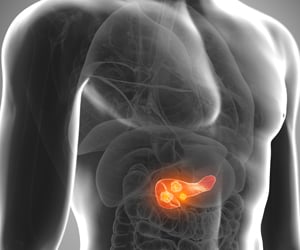Unveiling the intersection of COVID-19 and tuberculosis (TB) diagnoses in South Africa's PHCs and the pandemic's prolonged influence on TB detection.
- COVID-19 led to a significant decline in TB diagnostic investigations and confirmed cases at South African PHCs
- TB investigations showed resilience post the initial COVID-19 wave, surpassing pre-pandemic levels
- The consistent trend of TB case confirmations faced disruptions due to the varying intensity of COVID-19 waves
Impact of COVID-19 on TB diagnostic services at primary healthcare clinics in eThekwini district, South Africa
Go to source). The severe acute respiratory syndrome (SARS-CoV-2) epidemic quickly affected the provision and utilization of health services around the world during the early months of the COVID-19 pandemic. Because effective therapies were insufficient, non-pharmaceutical approaches were implemented to limit SARS-CoV-2 transmission. The redirection of human resources and health facilities to combat COVID-19 had disastrous consequences for the management of other diseases, particularly tuberculosis.
Impact of COVID-19 on TB Diagnostic Services in South African PHCs
The current study investigates the amount of COVID-19-related disruption of TB diagnostic services at South African PHCs.Monthly aggregated data from the District Health Information System (DHIS) were used to conduct an interrupted time series (ITS) analysis to analyze trends in TB investigation and verification throughout COVID-19. These data were divided into time groups, including the pre-pandemic era between January 2018 and February 2020, followed by the initial COVID-19-related lockdown period in April 2020, as well as sequential COVID-19 waves.
Clinics with missing or outlier data were omitted from the analysis. Ordinary least squares (OLS) regression modeling was employed alongside segmented-type linear regression modeling to assess the impact of the pandemic on TB investigations and verifications during the lockdown and following the COVID-19 waves.
The first exposure period corresponded to the level five lockdown in April 2020, followed by the second exposure period in July 2020, at the first COVID-19 wave peak. The third exposure period corresponded to the second COVID-19 wave peak in January 2021, while the fourth period corresponded to the third COVID-19 wave peak in July 2021. The fifth exposure period occurred in December 2021, at the peak of the fourth COVID-19 wave.
Interplay of Tuberculosis and COVID-19
The study included 94 and 76 PHCs, respectively, to examine tuberculosis investigations and confirmed cases. At the PHCs, the average monthly count of TB investigations and confirmed cases was 9,965 and 754, respectively. The SARS-CoV-2 outbreak had a considerable impact on both TB indices; however, the effects varied during the pandemic.The lockdown period led to a 45% decrease in diagnostic investigations and a 40% decrease in confirmed TB cases. Before the pandemic, TB investigations at PHCs increased by 23 tests per month from a baseline of 8,860 tests. However, there was a drop of 4,165 investigations during the initial level-five lockdown period.
Following the initial COVID-19 wave, both indicators showed a strong rebound. TB investigations showed lower declines during the COVID-19 pandemic, but they regained and exceeded pre-pandemic levels near the end of the research. The SARS-CoV-2 outbreak had a significant impact on TB diagnostic services at PHCs, with TB case confirmations suffering the most throughout COVID-19.
TB investigations increased by 16% during the first COVID-19 wave in July 2020, compared to the level-five lockout. TB investigations, on the other hand, climbed by 712 each month after the initial COVID-19 wave. The second COVID-19 wave was linked to a 23% decline in January 2021, with these decreases continuing month after month. TB examinations were related to non-significant increases in mortality during the third COVID-19 wave, which was driven by the SARS-CoV-2 Delta strain.
By December 2021, the fourth COVID-19 wave has reduced TB examinations by 33%. Although monthly trends slowed significantly after the fourth peak, graphical representations showed that more TB investigations were completed during this period than before the epidemic began. TB case confirmations were constant pre-pandemic and minimally differed from the initial total of 803 at the start of the investigation. TB confirmations were reduced by 334 during the lockdown in April 2020, a 40% reduction that remained each month after level five lockdown.
TB confirmations increased by 7% during the initial wave of COVID-19 patients; yet, after the lockdown, TB confirmations climbed by 47. TB confirmations fell by 12% during the second COVID-19 wave and remained stable in the months that followed. TB confirmations reduced by 29% at the top of the third COVID-19 wave but grew by an average of 46 cases monthly after the peak. TB confirmations had decreased by 26% by the fourth COVID-19 wave.
COVID-19's Effect on TB Detection in South African Health Centers
The findings of the study show the influence of COVID-19 on TB diagnosis in South African PHCs. More study is needed to establish the causes of the continuous declines in TB detection and to inform the creation of long-term diagnostic systems capable of withstanding future pandemics.Reference:
- Impact of COVID-19 on TB diagnostic services at primary healthcare clinics in eThekwini district, South Africa - (https://www.nature.com/articles/s41598-023-43589-7)



